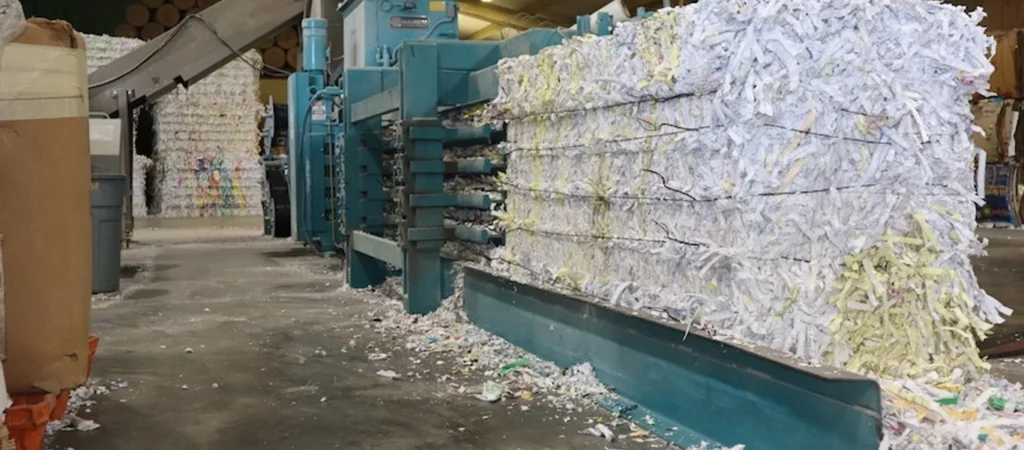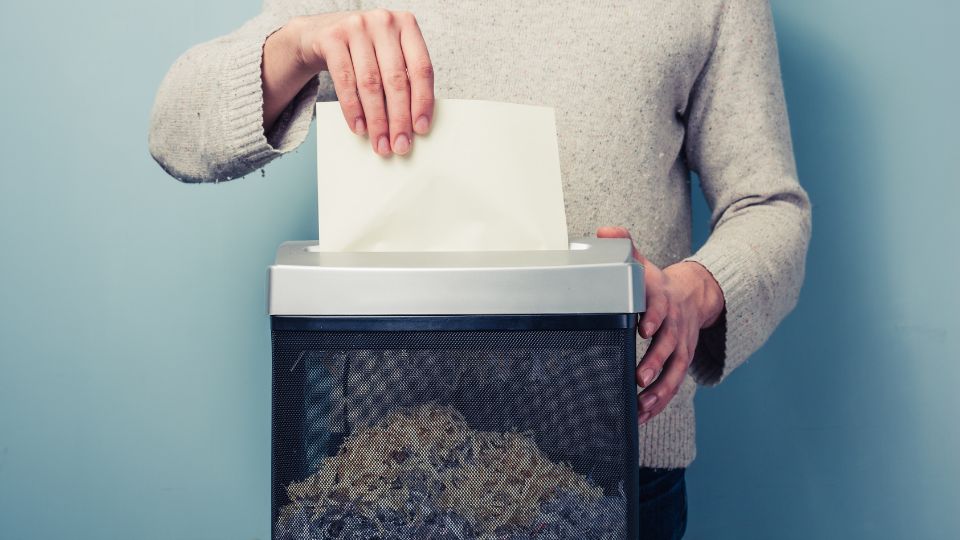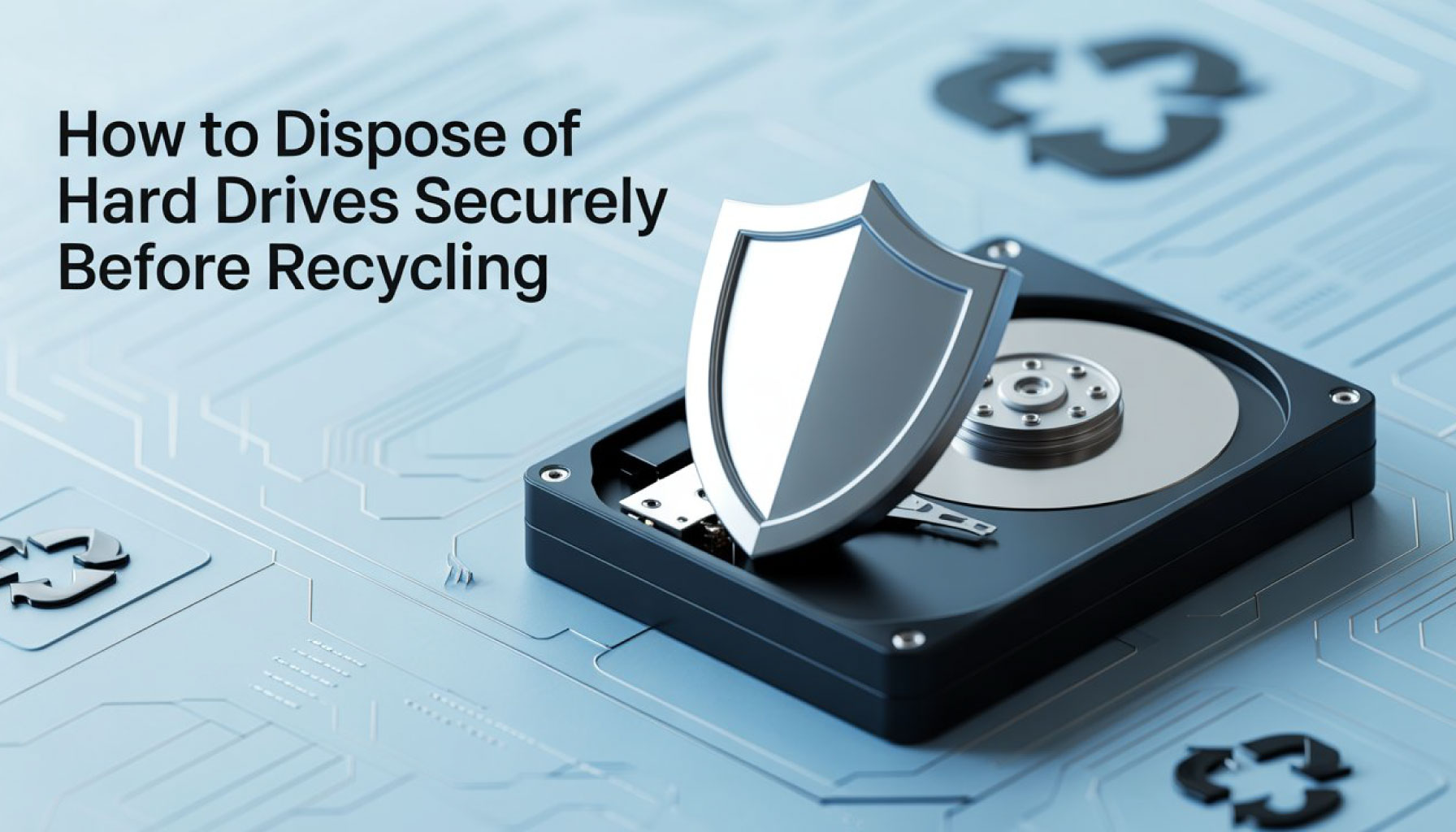Every business handles information that must remain private. Whether it’s employee records, client contracts, financial data, or customer service logs, the risk of that data falling into the wrong hands doesn’t disappear once it’s no longer needed — it simply shifts to how it’s disposed of.
Confidential waste isn’t just another compliance concern; it’s a reputational, legal, and operational risk In the UK, secure disposal of sensitive material is governed by laws such as the UK General Data Protection Regulation (UK GDPR) and the Data Protection Act 2018. Mishandling this waste can result in regulatory penalties, data breaches, or loss of client trust.
This guide sets out what confidential waste is, how to identify and manage it, and what disposal methods meet both your organisation’s needs and the relevant compliance standards.
What is Confidential Waste?
Confidential waste refers to any material — physical or digital — that contains private, sensitive, or restricted information, and which must be destroyed securely to prevent unauthorised access.
This can include:
- Personnel records, including application forms, references, disciplinary notes, and payroll data
- Customer or client correspondence
- Medical or legal records
- Contracts, NDAs, and commercial agreements
- Business plans, financial forecasts, and pricing strategies
- Photocopies of passports, driving licences, or proof of address
- Digital devices such as USB drives, external hard drives, laptops, and mobile phones
A common mistake is assuming that only formal documents or financial information qualify. In reality, anything containing identifiable personal data or business-sensitive material should be treated as confidential waste.
For digital items, deletion alone is not sufficient. Many devices retain fragments of data that can be recovered using widely available tools. Physical destruction remains the most secure approach.
What to Do with Confidential Waste
Disposing of confidential material requires more than an office shredder and good intentions. Organisations must have a structured and traceable process that covers the entire lifecycle of that data — from identification through to destruction.
Below are the four key actions every business should implement.

Identify Confidential Waste
Every team in your organisation needs to understand what qualifies as confidential. This goes beyond just HR or finance. Marketing, customer service, IT, and even procurement teams regularly handle data that would need secure disposal.
Tips for effective identification:
- Review documents for personal data, financial content, strategic information, or legal sensitivity
- Encourage staff to ask, “Would I be concerned if this was leaked?”
- Implement a clear policy with practical examples relevant to each department
- Apply the principle of minimum retention — if information is no longer needed, dispose of it securely
This front-line awareness can significantly reduce the risk of data being accidentally mishandled.
Document Shredding
For most organisations, the majority of confidential waste is still paper-based. Shredding is the industry standard for safe disposal — but not all shredding methods are equal.
In-house shredding with a basic machine is better than binning, but it often produces strip-cut waste, which can theoretically be reconstructed. It’s also time-consuming and difficult to manage at scale.
Professional shredding services, especially those compliant with BS EN 15713 (the British standard for the secure destruction of confidential material), offer a safer and more efficient solution.
Options include:
- On-site shredding – a mobile unit comes to your premises and shreds materials under your supervision
- Off-site shredding – materials are collected in sealed containers and transported to a secure facility
Both should include:
- Uniformed, security-vetted staff
- GPS-tracked vehicles
- A Certificate of Destruction for audit and compliance purposes
If your organisation is audited or investigated following a data breach, having this certificate can provide vital evidence of due diligence.
Secure Bins and Containers
Until confidential waste is shredded or destroyed, it must be stored securely.
Lockable bins and consoles are essential for preventing accidental or malicious access in busy office environments.
Key features to look for:
- Tamper-proof locks
- Clearly marked labels such as “Confidential Waste Only”
- Solid build quality to prevent damage or tampering
- Easy integration into workflows — bins should be placed in areas where waste is most likely generated (e.g. printing stations, HR offices, finance departments)
Regular collection and internal monitoring will ensure bins don’t overflow or remain unsecured for extended periods.
Electronic Media Destruction
Electronic waste poses a different — and often more serious — risk. Simply deleting files or performing a factory reset does not remove all data from digital devices.
Devices requiring secure destruction include:
- Desktop and laptop computers
- Servers and backup tapes
- Mobile phones and tablets
- USB sticks and external hard drives
- CDs, DVDs, and SD cards
- Printers and photocopiers (which often retain stored copies of printed material)
Best practice is to partner with an IT asset disposal (ITAD) provider who offers:
- Physical destruction through shredding, crushing, or incineration
- Degaussing for magnetic media (not suitable for SSDs)
- WEEE-compliant recycling in line with environmental regulations
- Documentation proving asset serial numbers and the date/method of destruction
Destroying a hard drive costs far less than a data breach — and prevents data recovery entirely.
Why is Confidential Waste Disposal Important?

Confidential waste isn’t just a security concern — it intersects with legal, ethical, operational, and reputational responsibilities. Failing to dispose of it correctly can expose an organisation to serious consequences.
Protecting Sensitive Information
The most immediate risk is a data breach. Discarded information, whether printed or digital, can be intercepted and exploited. For example:
- Personal data can be used for identity theft or fraud
- Internal business information can be leaked or misused by competitors
- Misplaced client data can lead to claims of negligence or breach of contract
Proper disposal eliminates these vulnerabilities by ensuring that data is irretrievable.
Legal and Regulatory Compliance
In the UK, several legal frameworks govern the management and destruction of confidential waste:
- UK GDPR and the Data Protection Act 2018 require data controllers to implement appropriate technical and organisational measures to secure personal data, including during disposal
- Freedom of Information Act 2000 places additional obligations on public sector bodies
- BS EN 15713 sets the British Standard for the secure destruction of confidential material
Failure to comply can result in significant penalties, particularly in the event of a breach or complaint to the Information Commissioner’s Office (ICO).
Avoid Corporate Espionage
Confidential waste can be an easy target for competitors or disgruntled insiders. Even innocuous-looking material — such as meeting notes or customer databases — can be commercially valuable.
Secure disposal makes it significantly harder for anyone to recover sensitive business intelligence, protecting the organisation’s commercial interests.
Maintain Trust
Clients, employees, and stakeholders expect their information to be handled with care — from the moment it is collected until it is no longer needed. Mishandling data at the point of disposal can erode that trust instantly.
Whether you’re a law firm, healthcare provider, or technology company, reputational damage from a data leak can have long-lasting effects on your ability to retain and win business.
Environmental Responsibility
Secure disposal and environmental responsibility are not mutually exclusive. In fact, the two often go hand-in-hand when handled correctly.
Professional shredding providers will:
- Recycle shredded paper through authorised paper mills
- Comply with the Waste Electrical and Electronic Equipment (WEEE) Regulations for digital devices
- Offer carbon-neutral or low-emissions disposal routes
This allows businesses to meet both data protection and sustainability goals simultaneously.
How to Get Rid of Confidential Waste

Whether you produce sensitive waste regularly or occasionally, it’s essential to use a method that guarantees both security and traceability.
One-Time Shredding
One-off or ad hoc shredding services are ideal for:
- End-of-year clean-outs
- Office moves or refurbishments
- Legacy file archive disposal
- Staff or departmental offboarding
With this service, a licensed contractor will:
- Collect sealed containers or sacks of confidential waste
- Transport them securely (or destroy them on-site)
- Provide a Certificate of Destruction
This is a cost-effective, practical solution for organisations that do not generate consistent volumes of sensitive waste.
Regular Collection Services
For businesses handling sensitive material daily or weekly, scheduled shredding is a safer, more structured approach.
Features typically include:
- Installation of lockable consoles or bins on-site
- Regular collection (weekly, fortnightly, or monthly)
- Secure chain of custody from collection to destruction
- Full reporting for compliance records
This method not only ensures ongoing compliance but also removes the burden from internal teams, reducing the risk of improper disposal.
If you handle high volumes of paper or digital data, a managed service agreement is often the most efficient and auditable solution.
Can You Put Confidential Waste in the Recycling Bin?
No — and doing so may constitute a data breach.
Recycling bins are:
- Open access
- Not monitored for unauthorised use
- Processed by third parties who are not vetted for data handling
Even if the material is paper-based, placing confidential documents in general recycling is a major risk. Instead:
- Shred all confidential waste before recycling
- Use secure waste providers that offer certified recycling post-destruction
- Never place digital media in general recycling — use WEEE-compliant providers only
In short: confidential waste can only enter the recycling stream after it has been securely destroyed.
Conclusion
Confidential waste is an unavoidable by-product of doing business — but how you handle it sets the tone for your organisation’s professionalism, compliance, and ethics.
Whether you’re disposing of old client records, retiring staff laptops, or clearing out paper archives, secure destruction is non-negotiable. It safeguards your data, protects your business, and helps you meet your legal obligations under UK GDPR and other regulations.
Implementing a clear, auditable process for identifying, storing, and securely disposing of confidential waste isn’t just best practice — it’s now an expectation. Partnering with professional shredding services in London ensures your sensitive data is destroyed to the highest standards, while meeting compliance requirements. With the right provider and internal policies, you can turn data disposal from a risk into a compliance strength.
FAQs for How to Get Rid of Confidential Waste
Can I shred confidential waste myself?
Yes, but only if you’re using a secure cross-cut shredder and handling the waste responsibly afterwards. For larger volumes, professional shredding is safer and ensures compliance.
Is it illegal to throw confidential documents in general waste?
While not illegal per se, doing so may lead to a breach of UK GDPR if personal data is compromised, which can result in enforcement or fines.
What happens after shredding?
Professional providers typically recycle shredded paper and dispose of digital media through WEEE-compliant channels. Always request confirmation.
What’s the minimum I should keep for compliance?
Every business should retain disposal certificates, destruction logs, and staff training records related to data handling and destruction for audit purposes.
How often should I schedule shredding?
That depends on your volume. For most offices, weekly or fortnightly collections are sufficient. Higher-risk sectors may require more frequent service.

